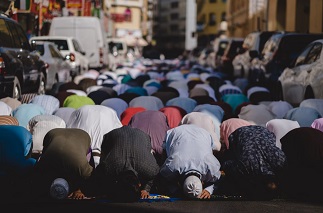Posts

The Demonization of Islam through Social Media: A Case Study of #Stopislam in Instagram
This article studies the process of demonization, its consequences, and how social media contribute to the formalization of its axiology. The demonization of societies aims to create social subjects that fit into the idea of the “other” by exposing them to compulsory invisibility. This research’s main objective was to examine how demonization is used as a weapon of oppression to devalue specific individuals through the hashtag #StopIslam and Instagram’s role in this process. The methodology used for this purpose has consisted of an empirical and quantitative analysis of the most recent (1 January 2020–31 July 2020) posts on Instagram with #StopIslam, analyzing the images and the content. The study has determined how, through social media manipulation, erroneous ideas are transmitted that prevent the Islamic collective’s integration, especially in European countries. The conclusions will reflect hate speech and how the Islamic world’s demonization results in the Muslim community’s stigmatization, racism, and Islamophobia. Although there are different articles related to demonization and hate speech, there are not many scientific resources that explain these variables on Instagram and how it affects the inclusion of the Muslim community in Europe, significantly when the time spent on the Internet is growing.

Otherness as a form of intersubjective social exclusion: Conceptual discussion from the current communicative scenario
This study aims to review the theory based on «otherness» as a form of social exclusion and symbolic violence from the constructions of realities of the media, with particular emphasis on the ethics and aesthetics of language and its role in materializing identity differences. A search for specific criteria and boolean algorithms is carried out in Web of Science and Scopus on «otherness» [AND] «social exclusion», to then submit the emerging results to a co-occurrence matrix by citations with VOSViewer v. 1.6.13. From the relation tree of the most cited documents [min = 7] of the downloaded articles, a critical/analytical reading is made. «Otherness» is reviewed to a greater extent from a Western perspective, and more specifically, from a Eurocentric one. This implies that the study of «otherness» is not sufficiently analyzed by Asian or African authors, who are excluded from the analysis. In this sense, «otherness» is understood as a theoretical construct and as any symbolic construction of the other (phenotypically, but also in ideology, values and customs), but which carries a load of stereotypes that can become polarization, demonization, ergo and violence. Revisiting «otherness» as an informative construct becomes imperative in light of the emergence of extremist groups and xenophobic parties, as well as separatist policies such as Brexit or the Catalan split in Spain. Few articles contribute to elaborating a complete conceptual construct on «otherness» as an epistemological category of communication and information, so this research effort attempts to compile its theoretical discussion.

Comparative analysis of media framing in international news agencies east-west. Case Study: Attack at Istanbul airport
Social realities are discursive constructs, so that attitudes and representations are the reflection of an informative approach. In this sense, the cultural and linguistic gaps between different civilizations, together with a discursive construction of a war nature, could be creating the breeding ground for a continuous confrontation between East and West. The present study analyzes the different rhetorical frames of the international news agencies Reuters, Al Arabiya, Al Jazeera and Associated Press about the terrorist attack at the Istanbul (Turkey) airport on July 28, 2016. A quantitative study of the figures speech and the most repeated topics in the headlines of the attack is carried out. The power of the media in public opinion and the construction of reality generate a discussion about how these news are spread and their effects. The objective is to compare the different rhetorical frames in both civilizations and to identify if stereotypes are projected and if this framing contributes to the spectacularization of the conflict. The main result is that there are no significant discursive differences, which leads to the conclusion that east-west rhetorical figures are used to produce a certain effect in the population, among those that highlight the euphemisms, disfemisms, demonization and discursive polarization, resources that serve to emphasize fear and create even larger gaps of social significance
